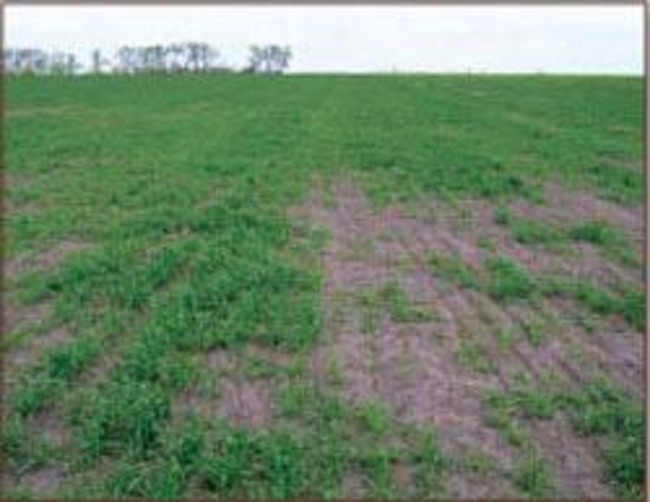To facilitate rapid emergence, seed winter wheat at a 1- to 1.5-inch soil depth. Seeding shallower than an inch deep puts the crowns at a higher risk for winter kill, while seeding deeper will delay emergence.
Calculate the seeding rate using the following equation:
Seeding rate (pounds per acre) = [desired stand / (1 - expected stand loss)] / [(seeds per pound) x percent germination]
Optimal stand
The optimum stand of winter wheat is 900,000 to 1,000,000 plants per acre or 21 to 23 plants per square feet. The optimum stand is less than hard red spring wheat (HRSW) because the crop will have more opportunity to tiller in the early spring.
Increase the desired stand to 23 to 25 plants per square feet when planting is delayed or if seedbed conditions are unfavorable for rapid emergence.
Winter kill
Expect some winter kill in Minnesota. However, don’t be too quick to destroy winter wheat stands in the spring.
Deciding whether to replant
Wait until the plants break dormancy and fields begin to green up before making any decision on replanting. Roots are generally less winter-hardy than crowns and regrowth may be very slow, even if roots and shoots appear dead. You may not be able to determine the degree of winter kill until the end of April.
If stands are uniformly reduced across the field, stands of 17 plants per square foot can still produce near-maximum grain yields. Even stands as low as 11 plants per square foot can still produce yields of 40 bushels per acre.
Distribution of winter kill across a field
More often than not, winter kill is not uniformly distributed across the field, but occurs in patches.
If smaller patches have stands of eight plants per square foot, leave the whole stand (Photo 1). If you lose large areas, consider destroying the winter wheat and planting spring wheat in those areas.
Avoid inter-seeding winter wheat and spring wheat, as this creates a mixture of contrasting wheat classes which can result in marketing problems.
Reviewed in 2021


